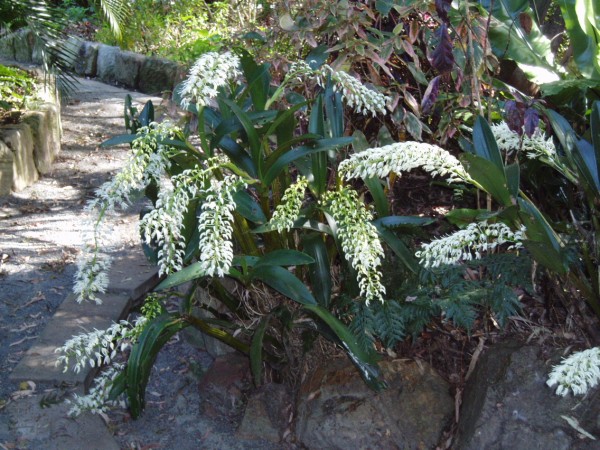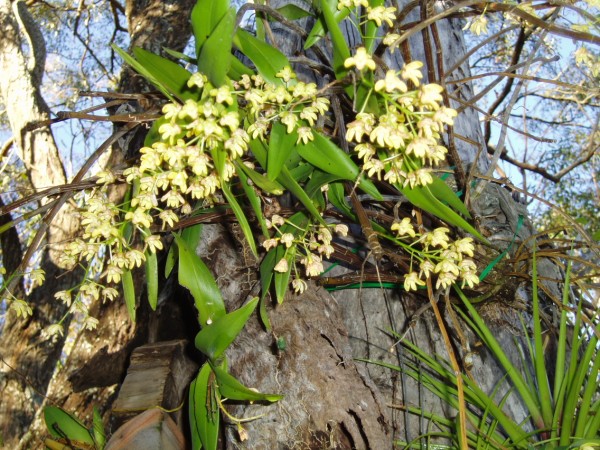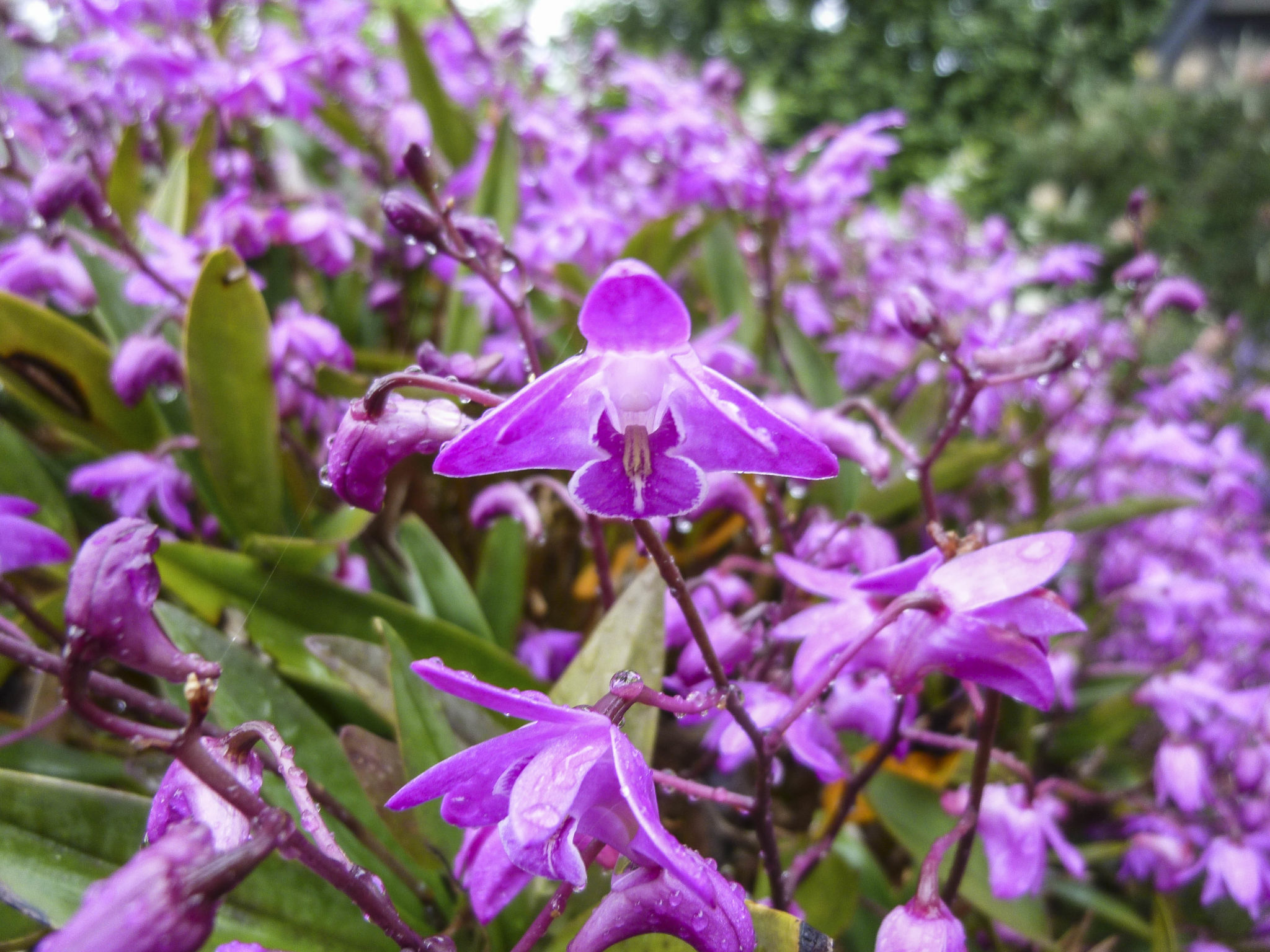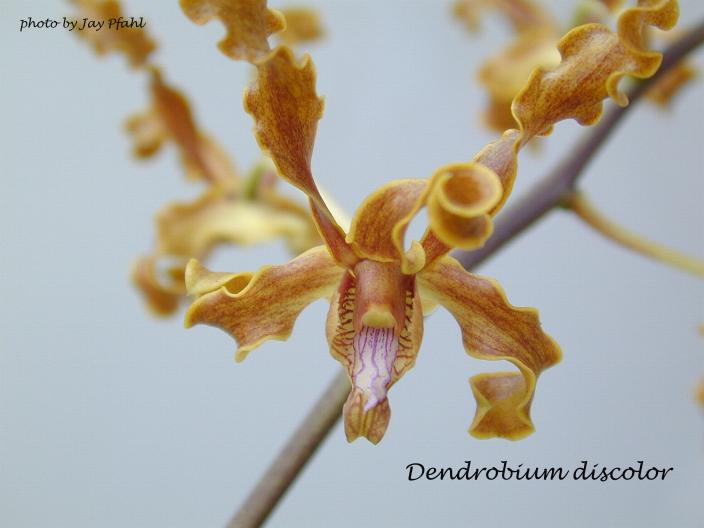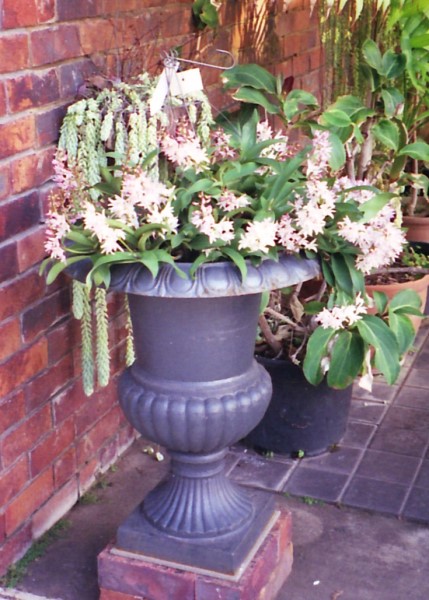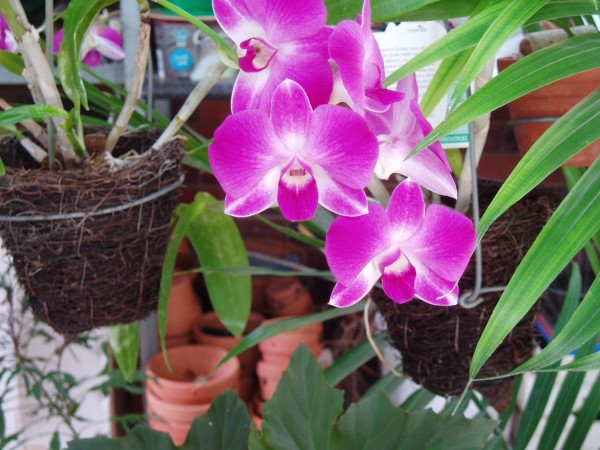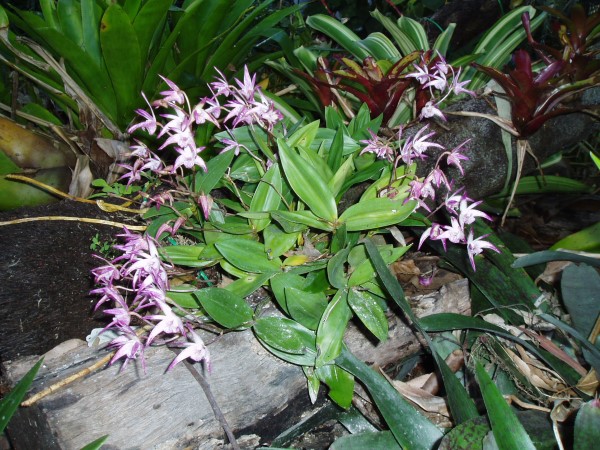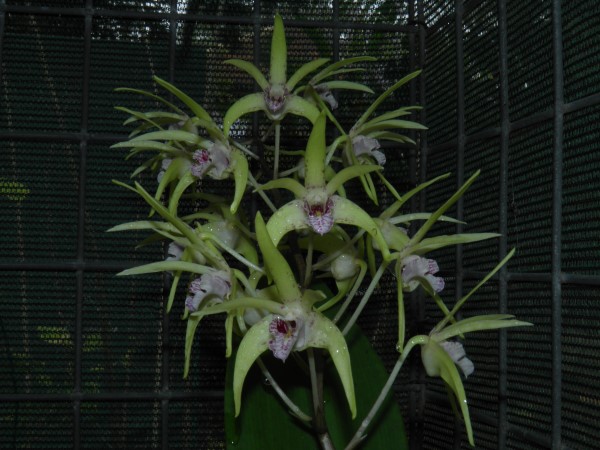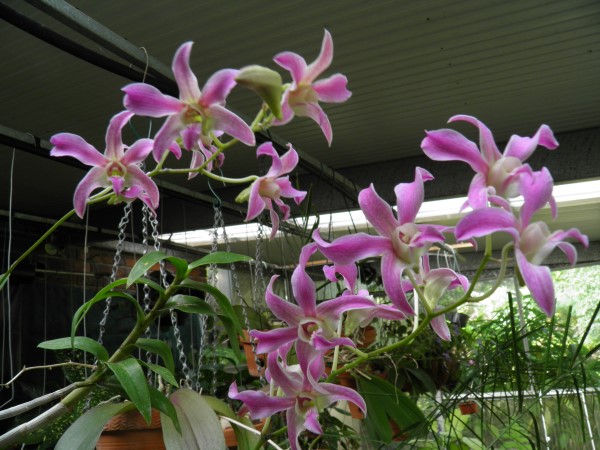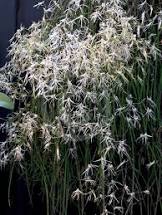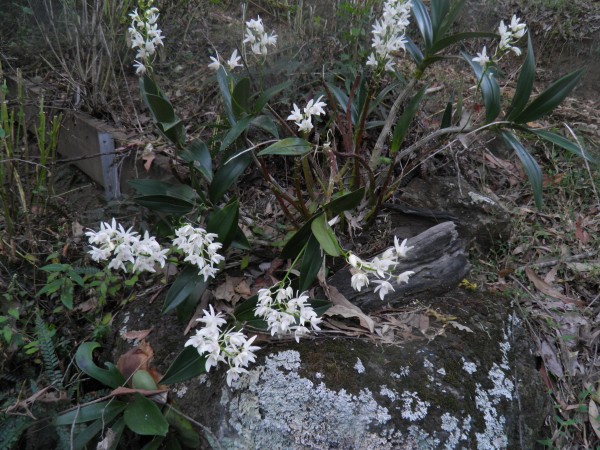


Return to Orchid Growing
NATIVE DENDROBIUM
GROWING HINTS
GROWING HINTS

NATIVE DENDROBIUMS
Very easy to grow outside on rocks or trees as epiphytes or lithophytes here in Brisbane. Most flower late August and they donít flower for very long, so make sure you donít miss them.
Dendrobium bigibbum Queenslandís flower emblem. Coming from Cooktown, North Queensland, it does like warmth in winter. It likes to grow on trees in shade where it can send its flower spikes out into the sun.
Dendrobium x superbiens is a cross between D. bigibbum x D. discolor. I find that is does not like to be below 10 degrees celsius in winter. Easily grown in a terracotta pot which can be moved to shelter in winter.
Dendrobium discolor is the largest of the Australian Dendrobium with cylindrical stems that are leafy in the upper two thirds and carries leathery leaves. It blooms in the spring on arched to 60 cm long densely 10 to 80, flowering raceme arising from the upper portion of an old cane as the new growth arises. The petals are twisted. It is found in North Queensland and New Guinea and grows on the coast in mangroves or behind dunes, where they can have salt spray as well as on cliffs and rock faces up to an altitude of 550 meters. This plant needs more light, in nature it always grows in exposed high light conditions.
Dendrobium teretifolium, commonly known as the thin pencil orchid, rat's tail orchid or bridal veil orchid, is epiphytic. It has long, thin hanging stems, pencil-like leaves and rigid flowering stems bearing up to twelve crowded white to cream-coloured flowers. It needs to be placed high on a tree so that its hanging stems have room to cascade down.
Dendrobium kingianum is a delightful small orchid that can be epiphytic or lithophytic and is variable in colour, with flowers from white through to pink and the lip can also be a different colour.
Dendrobium gracilicaule is mostly epiphytic with delightful yellow cup like flowers
Dendrobium falcorostrum is known as the beech orchid as it only grows on Antarctic Beech trees in the Rainforests of NSW and Queensland.
These last 4 orchids all come from rainforest and humid open forest mostly in near-coastal districts in New South Wales and Queensland . They all require bright light with maybe morning sun.
Dendrobium x delicatum is a natural hybrid between D.kingianum and D.speciosum var.hillii). D. x delicatum is a lithophyte (growing on rocks). It is variable in habit, which is to be expected as its parents are also variable in habit. The pseudobulbs are 20 to 35 cm long, thickest near the base and tapering towards the apex. There are usually 2 to 5 thick leaves at the top of each pseudobulb, the leaves being 75 to 175 mm long. Flowers occur on 250 mm long stems in clusters of up to 14 or more flowers. They are usually pure white to cream with purple dots on the labellum and are often sweetly scented. Flowers are seen from late winter to spring.
Watering: All these native orchids like our wet summers and dry winters. If grown outside on trees or rocks, they need very little care. Watering in winter should be minimal and in the morning as they like to be dry when it is cold.
Propagation
∑They are all propagated by keikies or division.
∑They can develop keikies off old flowering stems (which is why you should never remove old flower stems that are still green). These keikies can be removed once they have attained a good size and have aerial roots. They can then be potted or placed as above
∑Keikies are best pulled gently off by hand.
Pests: I have not found any pests attractive to these natives, particularly if they are grown naturally outside with plenty of air movement.
Dendrobium bigibbum Queenslandís flower emblem. Coming from Cooktown, North Queensland, it does like warmth in winter. It likes to grow on trees in shade where it can send its flower spikes out into the sun.
Dendrobium x superbiens is a cross between D. bigibbum x D. discolor. I find that is does not like to be below 10 degrees celsius in winter. Easily grown in a terracotta pot which can be moved to shelter in winter.
Dendrobium discolor is the largest of the Australian Dendrobium with cylindrical stems that are leafy in the upper two thirds and carries leathery leaves. It blooms in the spring on arched to 60 cm long densely 10 to 80, flowering raceme arising from the upper portion of an old cane as the new growth arises. The petals are twisted. It is found in North Queensland and New Guinea and grows on the coast in mangroves or behind dunes, where they can have salt spray as well as on cliffs and rock faces up to an altitude of 550 meters. This plant needs more light, in nature it always grows in exposed high light conditions.
Dendrobium teretifolium, commonly known as the thin pencil orchid, rat's tail orchid or bridal veil orchid, is epiphytic. It has long, thin hanging stems, pencil-like leaves and rigid flowering stems bearing up to twelve crowded white to cream-coloured flowers. It needs to be placed high on a tree so that its hanging stems have room to cascade down.
Dendrobium kingianum is a delightful small orchid that can be epiphytic or lithophytic and is variable in colour, with flowers from white through to pink and the lip can also be a different colour.
Dendrobium gracilicaule is mostly epiphytic with delightful yellow cup like flowers
Dendrobium falcorostrum is known as the beech orchid as it only grows on Antarctic Beech trees in the Rainforests of NSW and Queensland.
These last 4 orchids all come from rainforest and humid open forest mostly in near-coastal districts in New South Wales and Queensland . They all require bright light with maybe morning sun.
Dendrobium x delicatum is a natural hybrid between D.kingianum and D.speciosum var.hillii). D. x delicatum is a lithophyte (growing on rocks). It is variable in habit, which is to be expected as its parents are also variable in habit. The pseudobulbs are 20 to 35 cm long, thickest near the base and tapering towards the apex. There are usually 2 to 5 thick leaves at the top of each pseudobulb, the leaves being 75 to 175 mm long. Flowers occur on 250 mm long stems in clusters of up to 14 or more flowers. They are usually pure white to cream with purple dots on the labellum and are often sweetly scented. Flowers are seen from late winter to spring.
Watering: All these native orchids like our wet summers and dry winters. If grown outside on trees or rocks, they need very little care. Watering in winter should be minimal and in the morning as they like to be dry when it is cold.
Propagation
∑They are all propagated by keikies or division.
∑They can develop keikies off old flowering stems (which is why you should never remove old flower stems that are still green). These keikies can be removed once they have attained a good size and have aerial roots. They can then be potted or placed as above
∑Keikies are best pulled gently off by hand.
Pests: I have not found any pests attractive to these natives, particularly if they are grown naturally outside with plenty of air movement.
Let nature be your guide






















